California Travel Guide
California is the most populous and third-largest state by area, with the largest sub-national economy in the world, Known for its notable contributions to popular culture, entertainment and sports, communication, information, innovation, environmentalism, economics, and politics and is considered the origin of the hippie counterculture, beach and car culture, and the personal computer, among other innovations.
North California Map
South California Map
Places to See in California

California National Parks
Channel Islands · Death Valley · Joshua Tree · Kings Canyon · Lassen Volcanic · Pinnacles · Redwood · Sequoia · Yosemite
Mission Santa Barbara
Elisa Rolle, CC BY-SA 3.0, via Wikimedia Commons; Image Size Adjusted
California Spanish Missions
Series of 21 religious outposts or missions established between 1769 and 1833 founded by Catholic priests of the Franciscan order, the surviving mission buildings are the state's oldest structures and its most-visited historic monuments

Pismo Beach, CA
hakkun, CC BY-SA 3.0, via Wikimedia Commons; Image Size Adjusted
Central California Coast
California region along the central Pacific Ocean coast directly west of Los Angeles and encompases the cities of Malibu, Santa Barbara, Ventura, Pismo Beach, San Luis Obispo and Morro Bay
Lake Tahoe
Largest alpine lake in North America, Lake Tahoe is a major tourist attraction and home to winter sports, summer outdoor recreation, and scenery enjoyed throughout the year

Downtown Los Angeles sunset with Mount Baldy in the background
Downtown Los Angeles, CC BY-SA 4.0, via Wikimedia Commons; Image Size Adjusted
Los Angeles
Largest city in California and the second most populous city in the United States is known for its Mediterranean climate, ethnic diversity, Hollywood entertainment industry, and its sprawling metropolis
Mojave Desert
Desert located primarily in southeastern California and southwestern Nevada, is the site of Death Valley, Joshua Tree National Park, and the Mojave National Preserve
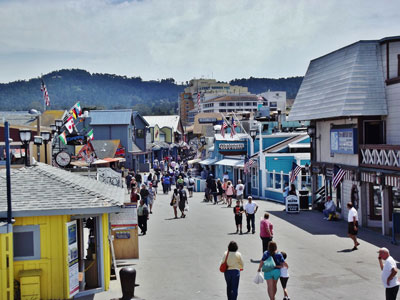
Fisherman's Wharf at Monterey, CA
Amadscientist, CC BY-SA 3.0, via Wikimedia Commons; Image Size Adjusted
Monterey Bay
Bay of the Pacific Ocean, south of the San Francisco Bay Area and north of Big Sur, and includes the cities of Monterey, Carmel-by-the-Sea and Santa Cruz
Northern California
Northern, less populated area of California featuring the northern coastal region including the Lost Coast and Redwood National and State Parks, and mountainous region that features Lassen Volcanic National Parks and Mount Shasta
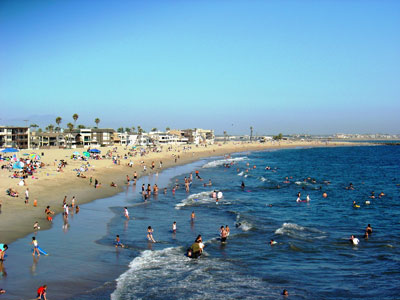
Seal Beach
Amadscientist, CC BY-SA 3.0, via Wikimedia Commons; Image Size Adjusted
Orange County
Tourist center, with attractions like Disneyland, Knott's Berry Farm, Mission San Juan Capistrano, Balboa Island, Angel Stadium, Downtown Santa Ana, Crystal Cove State Park, and several popular beaches along its more than 40 miles of coastline

Fred Moore from Morro Bay, CA, USA, CC BY 2.0, via Wikimedia Commons; Image Size Adjusted
Pacific Coast Highwy / Big Sur
Rugged and mountainous section of the Central Coast of California between Carmel Highlands and San Simeon, where the Santa Lucia Mountains rise abruptly from the Pacific Ocean and is frequently praised for its dramatic scenery
Sacramento
Urban center situated at the confluence of two major rivers, serving as a political, cultural, and economic hub with deep historical roots and a diverse metropolitan population.
San Diego
Second most populous city in California, is known for its mild year-round climate, natural deep-water harbor, extensive beaches and parks, and long association with the United States Navy and Marine Corps

Old Coast Guard Station and Golden Gate Bridge
Will Elder, Public domain, via Wikimedia Commons; Image Size Adjusted
San Francisco, CA
San Francisco is the cultural, commercial, and financial center in Northern California and a popular tourist destination, known for its cool summers, fog, steep rolling hills, eclectic mix of architecture, and landmarks, including the Golden Gate Bridge

Three segment panorama of Point Reyes headlands from Chimney Rock Trail
King of Hearts, CC BY-SA 4.0, via Wikimedia Commons; Image Size Adjusted
San Francisco Bay Area
Region of California known for its natural beauty, prominent universities, technology companies, and affluence. The Bay Area contains the cities of San Francisco, Oakland, and San Jose, Silicon Valley, and regional, state, and national parks
Santa Catalina Island
Rocky island off the coast of Southern California in the Gulf of Santa Catalina
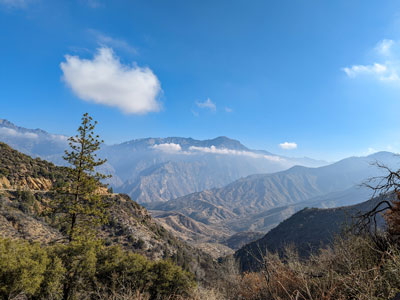
Cedar Grove, Kings Canyon NP
RuggyBearLA, CC BY 2.0, via Wikimedia Commons; Image Size Adjusted
Sierra Nevada
Mountain range in the Western United States, with the vast majority of the range lies in California, features include Yosemite, Kings Canyon and Sequoia National Parks, twenty-six wilderness areas, ten national forests, and two national monuments
Southeastern California
Southeastern region of California centering aorund the Sonoran Desert, and features the city of Palm Springs, Joshua Tree National Park, and the Salton Sea
Overview
California is the most populous and the third-largest state by area. The Greater Los Angeles area and the San Francisco Bay Area are the nation's second and fifth most populous urban regions respectively. Sacramento is the state's capital, while Los Angeles is the most populous city in the state and the second most populous city in the country (after New York City). San Francisco is the second most densely populated major city in the country (after New York City) and the fifth most densely populated county in the country, behind four of New York City's five boroughs.
The economy of California is the largest sub-national economy in the world. If it were a country, it would be the 37th most populous country and the fifth largest economy as of 2020.
What is now California was first settled by various Native Californian tribes before being explored by a number of Europeans during the 16th and 17th centuries. The Spanish Empire then claimed and colonized it. In 1804, it was included in Alta California province within the Viceroyalty of New Spain. The area became a part of Mexico in 1821, following its successful war for independence, but was ceded to the United States in 1848 after the Mexican-American War. The western portion of Alta California was then organized and admitted as the 31st state on September 9, 1850. The California Gold Rush started in 1848 and led to dramatic social and demographic changes, with large-scale immigration from other parts of the United States and abroad and an accompanying economic boom.
Notable contributions to popular culture have their origins in California. The state also has made noteworthy contributions in the fields of communication, information, innovation, environmentalism, economics, and politics. It is the home of Hollywood, the oldest and largest film industry in the world, which has had a profound effect on global entertainment. It is considered the origin of the hippie counterculture, beach and car culture, and the personal computer, among other innovations. The San Francisco Bay Area and the Greater Los Angeles Area are widely seen as centers of the global technology and entertainment industries, respectively.
The state's diverse geography ranges from the Pacific Coast and metropolitan areas in the west to the Sierra Nevada mountains in the east, and from the redwood and Douglas fir forests in the northwest to the Mojave Desert in the southeast. The Central Valley, a major agricultural area, dominates the state's center. Although California is well known for its warm Mediterranean climate, the large size of the state results in climates that vary from moist temperate rainforest in the north to arid desert in the interior, as well as snowy alpine in the mountains. All these factors lead to an enormous demand for water. Over time, droughts and wildfires have increased in frequency and become less seasonal and more year-round, further straining California's water security.
The Sierra Nevada (Spanish for "snowy range") includes the highest peak in the contiguous 48 states, Mount Whitney, at 14,505 feet (4,421 m). The range embraces Yosemite Valley, famous for its glacially carved domes, and Sequoia National Park, home to the giant sequoia trees, the largest living organisms on Earth, and the deep freshwater lake, Lake Tahoe, the largest lake in the state by volume.
About 45 percent of the state's total surface area is covered by forests, and California's diversity of pine species is unmatched by any other state. California contains more forestland than any other state except Alaska. Many of the trees in the California White Mountains are the oldest in the world; an individual bristlecone pine is over 5,000 years old.
In the south is a large inland salt lake, the Salton Sea. The south-central desert is called the Mojave; to the northeast of the Mojave lies Death Valley, which contains the lowest and hottest place in North America, the Badwater Basin at -279 feet (-85 m). The horizontal distance from the bottom of Death Valley to the top of Mount Whitney is less than 90 miles (140 km). Almost all of southeastern California is arid, hot desert, with routine extreme high temperatures during the summer. The southeastern border of California with Arizona is entirely formed by the Colorado River, from which the southern part of the state gets about half of its water.
As part of the Ring of Fire, California is subject to tsunamis, floods, droughts, Santa Ana winds, wildfires, landslides on steep terrain, and has several volcanoes. It has many earthquakes due to several faults running through the state, the largest being the San Andreas Fault. About 37,000 earthquakes are recorded each year, but most are too small to be felt.
Culture
The culture of California is a Western culture and most clearly has its modern roots in the culture of the United States, but also, historically, many Hispanic Californio and Mexican influences. As a border and coastal state, Californian culture has been greatly influenced by several large immigrant populations, especially those from Latin America and Asia.
California has long been a subject of interest in the public mind and has often been promoted by its boosters as a kind of paradise. In the early 20th century many Americans saw the Golden State as an ideal resort destination, sunny and dry all year round with easy access to the ocean and mountains. In the 1960s, popular music groups such as The Beach Boys promoted the image of Californians as laid-back, tanned beach-goers.
The first priests to come to California were Catholic missionaries from Spain. Catholics founded 21 missions along the California coast, as well as the cities of Los Angeles and San Francisco
Sports
California has nineteen major professional sports league franchises, far more than any other state. The San Francisco Bay Area has six major league teams spread in its three major cities: San Francisco, San Jose, and Oakland, while the Greater Los Angeles Area is home to ten major league franchises. San Diego and Sacramento each have one major league team. California is the only U.S. state to have hosted both the Summer and Winter Olympics.
This article uses material from the Wikipedia article "California", which is released under the Creative Commons Attribution-Share-Alike License 3.0

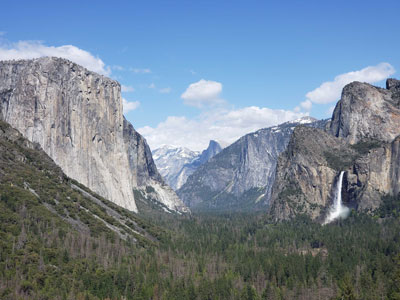
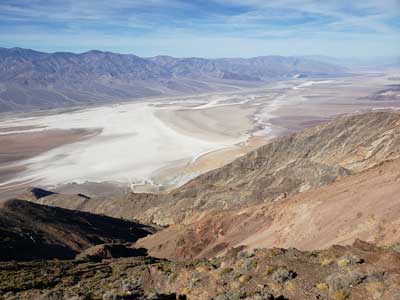
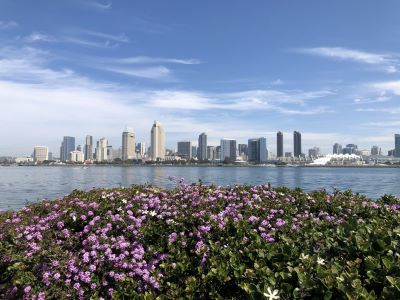
-400.jpg)





